PRESERVING LEMONS
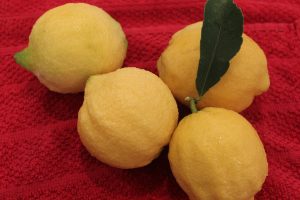

Do you have a glut of citrus fruit? Me too. I like the flavour of preserved lemons, typically used in Arabic and Moroccan food, although I use the lemons in a range of recipes.
Preserved lemons are easy and quick to prepare. The prepared lemons are left in the brine for about a month. Then the skins will be really soft and luscious. You need fresh lemons, salt, a jar with a screw cap lid and a sharp knife. The jar and lid need to be sterilised. This can be done in the dishwasher, the microwave or in a big pan of boiling water. Remove the jar and leave it to dry as it cools off.
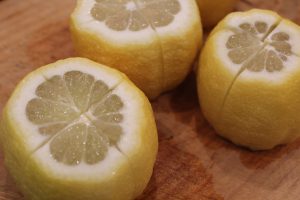

Begin by washing your lemons. Meyer lemons are best. Slice off the top and the bottom of the fruit. Cut the lemons across one way and then the other, not cutting all the way through. Put a tablespoon of salt in the bottom of the now dry jar, gently ease the lemon open and add 1 tablespoon of salt, insert in the jar. Continue until the jar is full, pressing the fruit down regularly to release the juice. If the liquid doesn’t cover the fruit, squeeze some more lemons and add the juice until the all fruit is submerged. Store in the fridge. (Note, not everyone stores their preserved lemons in the fridge but I prefer to in our climate.)
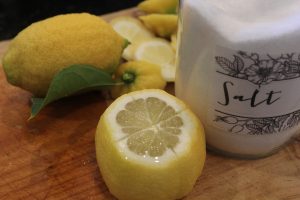

Invert the jar daily for the first five days, then whenever you notice it in the fridge. Wait about three more weeks before using the preserved lemons.
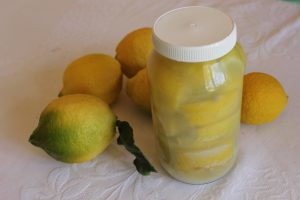

To use, remove a piece of now soft lemon, scrape off the remaining pulp, rinse off the salt and finely cut the skins to include in your recipe. Delicious! Look up recipes online for Roasted Cauliflower with Capers and Preserved Lemons and Prawns with Oregano and Preserved Lemons if you need some ideas.
CORD STORAGE
Some of our electrical appliances sit together in a small area. This is dictated by access to a power point and convenience as they’re next to the oven, a large work space and the kettle is under the mug cupboard, too.
The mixer is not plugged in permanently. Its cord wouldn’t stay wound up. It is a heavy piece of equipment to move around and resists being slid from one part of the bench top to another, dragging it’s unwieldy cord behind it. The real issue is it took time and effort to wipe around it and keep the area clean.
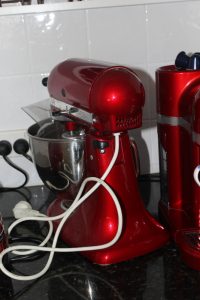

The solution was so easy!
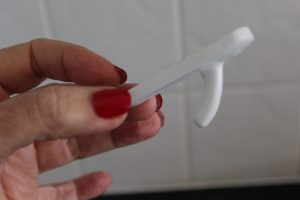

I bought a stick on hook, placed it out of sight on the back of the mixer and “trained” the cord to stay wound up neatly by holding it in place with a rubber band for a few days.


It’s perfect, easy and inexpensive. Problem solved.


ALMOST INSTANT POACHED EGGS
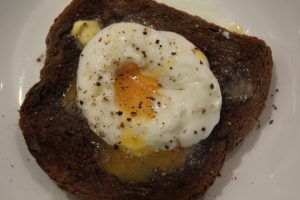

This way of poaching an egg is so easy and reliable. Pour some warm, not boiling water from the kettle into a large mug, half filling it.
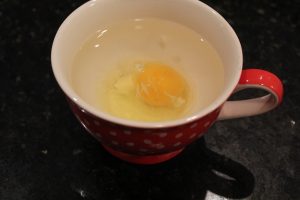

Gently crack an egg into the water and microwave it for one minute. Remove the cooked egg using a slotted spoon and gently slide onto your plate.The individual power of your own microwave will determine the exact time required but my 1200 wt microwave takes a minute to cook. I like my eggs quite soft and runny so you may need more time if you like them firmer. You’ll know from your first one what to do in future, anyway.
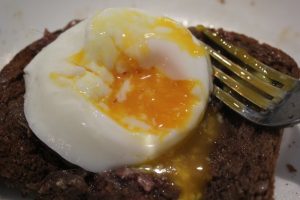

Before you cook the egg put your bread to toast as that will take longer than the egg! I’ve heated leftover pasta sauce then slid the poached egg on top of it for a delicious, quick light dinner. So quick, so easy.


In Australia, September 15th is the National Heart Foundation’s giving day. The funds raised goes towards vital life-saving research. More Australians die every year of heart disease than from any other cause. Apparently, 70% of Australians have at least three modifiable risk factors for heart disease most of which can be reduced by eating a heart healthy diet and being active every day. Keep well and look for ways to donate to GIVEWITHHEARTDAY.COM.AU
